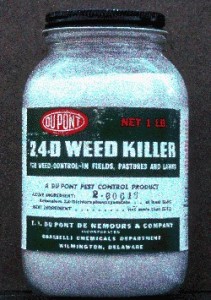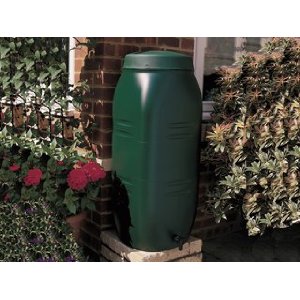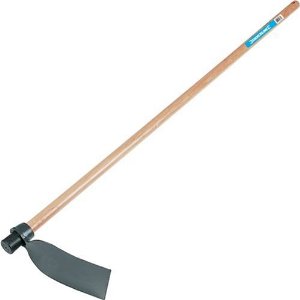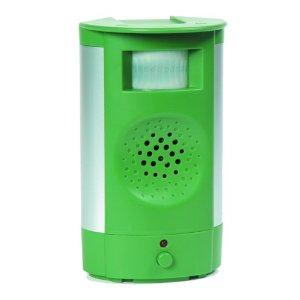Some Green Alternatives to Chemical Weedkillers
Many people love their gardens and the environment, but unfortunately there seems to be a trade off between a lovely weed free garden and using toxic but effective chemical weed killers. However don’t worry, there is a way to keep your garden in good repair without having to use these chemicals. It’s simple, just find out which of the Green and environmentally friendly weed killers is most effective for you.
It is perfectly possible to look after a garden organically, and is actually not as difficult as you might imagine.After all their have been beautiful gardens for centuries, in fact long before chemicals and weed killers have existed.These gardens of the past must have used environmentally friendly methods of weed control, so you can too.

But first before zooming on to the green weed killers, you should think for a minute about the apparent effectiveness of these chemicals everyone seems to use.
They are expensive, harmful to many plants as well as pets and even children.There are bigger risks too, potentially they can end up seeping into our water systems.For example rain can carry these chemicals whcih have been recently applied into the water through drainage systems and storm drains.Also seeping into the soil, and then to streams, rivers, ponds and wells.
In fact there’s so many risks of using these chemicals – it really doesn’t seem worth it.So this is all very well, but are there any alternatives. Well fortunately there are many ways of dealing with weeds without all these nasty chemicals.
Ordinary Salt
Mixed with water and then appied directly on to the offending weeds.This definitely is effective but you need to be careful where you use it. Salt water on the soil will sterilise for all plants too.
Vinegar
This is a very, very effective weed killer, all you need to do is to pour it directly on the roots of any weed.If you mix it up with washing up liquid or detergent, then spay the misture onto weeds also works well.You can also use lemon juice, but unfortunately this can be expensive. However if you have access to lemons it’s a fantasticly effective green weed killer.
Water
Yes even humble water, if boiled first can be used to scald and destroy weeds.It’s obviously a very cheap option, but of course don’t get it on your other plants as they will also be affected.
Tabasco Sauce
Another heat based approach, surprisingly many very successful gardeners use this spicy sauce to control weeds.
As well as using some or all of these tips, in some cases manual intervention will do the trick .Leave whatever weed killers you have used for a day or two, then remove the dying ones to finish them off. It’s important here to get all the roots of the weed rather than just a few leaves or the stem. If you leave the root in then there is a very good chance that the weed will resprout.
For those of use who’s back has seen better days, then getting at roots can be difficult – try using a gardening hoe to hack the roots out. It’s certain that some deep rooted weeds may even survive. You’ll then need a hand rake or a cultivator so that you can dig them out completely.
Categories: environmental, garden design, Garden Tools, Lawn Care Tags: chemical weed killers, eco friendly weedkiller, weed killer, weeds
Gardening Hoes – A Great Investment
You’d think it would be quite easy to find but I challenge you to find one in a DIY or hardware store – I’m talking about gardening hoes. I’d managed to survive 25 years of gardening without actually owning one, but I was speaking to a neighbor a few weeks ago and he mentioned it was one of his most useful tools.
However for me I wasn’t entirely sure what you would use a garden hoe for anyway. The hoe is actually one of man’s oldest tools which I think is one reason B&Q should be ashamed of not stocking them (well in my local branch anyway). There are quite a few different types but I was recommended to buy a digging hoe.
You’ll find lots of uses for these – I find them especially good for moving shrubs and smaller trees. You can dig under the roots and lever them out with this sort of gardening hoe. I have got quite heavy, clay soil and moving any sort of shrub with decent roots can be a real pain with a fork or spade but this is just the right shape.
But the beauty behind this tool is that you’ll find loads of other uses. It can be used as a mini-plough to turn over earth, dig out your potatoes or indeed create the trench for planting them in the first place.
In fact you’ll probably even find some uses outside the garden, this little gardening hoe was also used to clear ice off a garden path with great success. Anyway enough of this – where did I actually find this useful tool – I bought this one from Amazon – the Silverline GT52 Digging Hoe
For under £10 you won’t find many bargains like this and as long as you don’t start getting carried away and attempting to dig out anything too big then it’s tough enough for a myriad of garden jobs. I was almost expecting it to be a little cheap feeling for that price but it really has a decent solid feel to the tool.
Categories: Garden Tools Tags: digging hoe, digging hoes, garden hoe, gardening hoes, hoe
Hydroseeding your Lawns
Hydroseeding is a modern and easy way of planting grass on your lawn. In hydroplanting, grass seeds, water, fertilizer, fiber mulch, and lime (optional) are blended together and applied to a prepared lawn area through a spraying hose. The wet fiber, which acts as the planting medium, easily bonds with the soil, creating a water-retaining blanket that will provide the seeds protection from the elements, as well as the nutrients they need, while being established. As the seeds germinate, the growing medium gradually decomposes and adds nutrients to the soil.

Taking Care of Grass
Planting your lawn by hydroseeding has advantages and disadvantages, which are discussed below.
Advantages. Hydroseeding allows for a big lawn area to planted at a relatively shorter period of time. The spraying process covers a wider planting area much more quickly than seeding or sodding. This method also makes it possible to efficiently seed contours and slopes. Because the wet fiber actually adheres to the soil, it creates a surface that prevents soil erosion. Hydroseeding can actually reduce erosion. Hydroseeding costs less than planting with sod, but more than regular seeding. The technology costs more, as well as the actual application which can only be done by trained professionals.
Hydroseeding has been found to result in higher seed germination rates as compared to regular seeding. Because it creates lush growth, mowing and lawn maintenance can actually start at less than a month after the date of application. The fiber in the mulch maintains moisture around the seeds, thus increasing seed germination rate.
Disadvantages. Hydroseeding companies offer limited grass varieties to choose from. Usually, these are sturdy grass varieties that lend themselves well to the procedures.
As in conventional seeding, hydroseeding cannot be done at just about any time of the year, or whenever the lawn owner wants hydroseeding to be done. In order to get the best results, hydroseeding should be done immediately prior to the prime growing season of the specific grass variety. It is seed and season-specific.
Hydroseeding also is a costly process, and one that is best done by professional hydroseeding companies. The technology does not lend itself to “do-it-yourself” gardener. Not only is the hydroseeding sprayer costly; operating it properly requires training and skill.
Nonetheless, in order to make the hydroseeding effort a success, here are some preliminary procedures that have to be undertaken.
Follow their instructions the company will give you on soil preparation. If none are given, you can do this task by going over your soil bed with a lawn roller that is filled with water to 1/2 or 1/4 level.
Get cost estimates from hydroseeding companies in your area. Do not settle for one company, but get comparative costs based on the types of services they offer, types of planting materials or hydroseeding blends they have, and other costs that the planting procedure will entail.
The hydroseed mixture is green in color and the area where it is applied will acquire a green color. This makes it easier to spot missed areas, or areas that need reapplication. The seeds will germinate in about a week. Maintenance can begin at 3 to 4 weeks after the date of application. The hydroseeding company teaches the technique of watering a hydroseeded lawn. Should there be areas of the lawn that show sparse growth or no growth at all, the hydroseeding company can be asked to remedy to the situation.
We hope you found this article useful brought to you by the http://www.bestelectriclawnmower.co.uk team !
Categories: Garden Fitness, Garden Tools, Lawn Care, Lawn Mowers, petrol mowers Tags:
Cat Repel – Enter the Big Cheese
I like wildlife, in fact although I live on a housing estate, the reason I moved here was it is next to a very old wood and a National Trust property and we get loads of wonderful birds. Anyway here is my story of how operation Cat Repel started. I am hopeless at identifying birds, I get all of them mixed up and that coupled with my diminishing eyesight means that I suspect my contribution to the RSPB survey this year might be flawed – but hey at least I tried.

But I also like other animals, but peering through the window yesterday I noticed a rather lack of birds despite my grand birdie breakfast laid out. On investigation I discovered a large, fat cat named after a famous footballer (name withheld to protect my identity) You see our garden is a bit of a suntrap, so animals who like to sunbathe, tend to lounge around our back garden which is fine, except for a card carrying member of the Royal Society of the Protection of Birds creating a bird killing zone is rather distressing.
So Operation Cat Repel was put into operation and I asked around to try and discover some humane way of repelling our feline friends at least from my back garden. I tried the water pistol method, but that never worked with the squirrels and had a similar effect with the cats. Anyway some suggested this device was a good idea- it’s called the Big Cheese
What it does is emit an ultrasonic sound whenever it detects movement of a large cat sized animal. The detection is infra red and works in a beam 12 metres in length and a 98 degree angle. Cats definitely do not like this! Humans are not really supposed to hear the sound but I’m afraid I could slightly, it’s not much of a problem though and not all can hear it, my wife says she can’t.
It really is very effective, the downsides are you can go through the little 9 volt batteries but investing in rechargeable ones would do that. I do wonder how much more it would have cost to make this solar charged as it’s going to be outside all the time. If you need to repel cats from your garden it does work, although one of the difficulties I found was putting it in the right spot, this of course depends on your garden and layout. You might find you need to buy a few of these units if you have a big garden Overall the Big Cheese Cat Repel device is worht investigating – there’s hundreds of other reviews – Big Cheese reviews here if you want check them out
Categories: environmental, Garden Tools, Lawn Care, Uncategorized Tags: big cheese cat repel, cat repel, cat repel device, keep cats off my garden, repelling cats
Some Environmental Tips for Gardeners
If you’re a gardener, there are lots of ways you can reduce our impact on the environment. The great thing is that most of these tips actually can save you money as well, so heres a few environmental tips for gardeners – thanks to the National Trust for many of these.
Saving Water – add between 5-10cm of much to beds and containers. This cuts down evaporation significantly and means you can water much lees often. Obviously it also helps keep out those pesky weeds. When we’re talking about watering your plants please try and collect rainwater, it’s actually much better for your plants and it doesn’t cost anything.
You can even now get water butts or bigger tanks with integrated pumps although it’s usually cheaper to buy a water butt and then purchase a cheap pump seperately. The water butts don’t have to cost much, here’s a nice slimline one from Amazon for about £20 – 100 Litre Slimline Water Butt Stand & Tap Kit

Environmental Tips Gardeners - Water Butt
If you line, porous wooden and terracotta containers with a lining such as plastic sheeting this will also cut down water loss. It’s surprising how moist the containers will keep with a little bit of sheeting to keep the water from draining away – but remember you do need some drainage holes at the bottom somewhere !
Always water in the evening if you possibly can, the evaporation loss can be quite substantial if you water in the hotter parts of the day. You can find you only need to water half as much if you do, also using a watering can is much more efficient than a hose, you’ll waste lots more water with a hose than you will using a watering can.
Any More Environmental Tips for Gardeners ?
There’s actually many more, mostly common sense ways to minimise your environmental impact with gardening. Reducing waste is obviously important, and the simplest way is to make your own compost, most organic matter is suitable so gather grass clippings, weeds, kitchen waste and shredded cardboard together to create your own compost.
Normally the best compost will be 50% green material and 50% woody material, use paper shredded up or sawdust even dried leaves to balance out the mixture if you need to. Also make sure that the compost remains moist.
But even if you are not able to create enough composts for your needs, make sure that you never but peat composts always buy peat free ones. Peat is extremely valuable to the environment actually locking away carbon and preventing it creating CO2 in the atmosphere, it shouldn’t be used in gardens as it takes hundred of years to replace each meter that is used for gardening.
REMEMBER DON’T BUY PEAT BASED COMPOSTS !!!!
I hope these environmental tips for gardeners are useful to you, I’ll publish some more on this blogs very soon.
Categories: environmental, Garden Tools, plants Tags: environmental tips, environmental tips for gardeners

